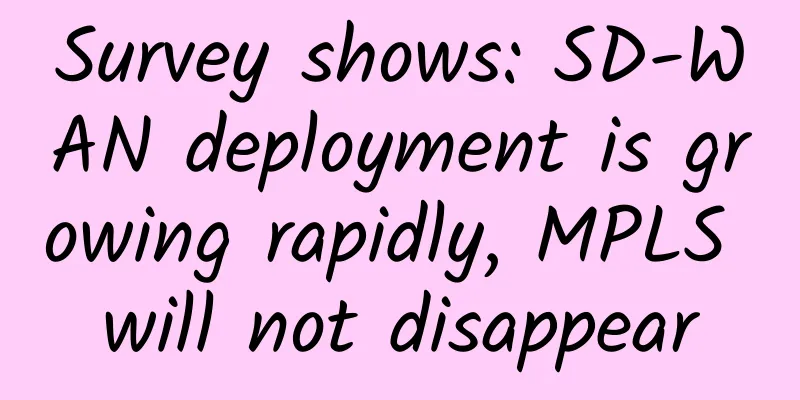It turns out that you can understand the next generation of Wi-Fi in such an easy-to-understand way

|
Each new Wi-Fi version brings new features and its acronym, like 802.11.ax, the Wi-Fi Alliance calls it Wi-Fi 6, which stands for the sixth generation of Wi-Fi. Wi-Fi 6 is the next generation of Wi-Fi in the journey of next-generation wireless technology innovation. What can we expect from Wi-Fi 6? Based on the advantages of Wi-Fi 5 (802.11ac), this standard further enhances the efficiency of spatial reuse through enhanced coding and scheduling, allowing each AP to communicate with more devices at the same time, allowing for a higher density of device deployment, lower latency, longer coverage, and higher speed. At the same time, its improvement in low power consumption can extend battery life, making it particularly friendly to battery-powered IoT devices. Wi-Fi 6 adds efficiency, flexibility, and scalability. This performance increase enables increased speed and capacity for the next generation of advanced applications, such as seamless mobile roaming, 4K or 8K video, high-definition collaboration applications, all-wireless offices, and IoT, even in high-density environments. We will soon feel the experience revolution brought by Wi-Fi 6 in conference venues with tens of thousands of people, high-density offices, wireless production, smart teaching, smart media, and digital scenarios of cities and enterprises. How does Wi-Fi 6 improve the experience? Wi-Fi 6 improves user experience through the following technical features, including: Higher-order modulation (1024-QAM), more subcarriers, and lower frame interval overhead, etc., through these technologies, the theoretical maximum connection rate of Wi-Fi 6 (160M bandwidth, 8 spatial streams) is increased from 6.9bps to 9.6 Gbps Supports multi-user transmission technologies, namely uplink and downlink MU-MIMO (Multi-User Multiple Input Multiple Output) and uplink and downlink OFDMA (Orthogonal Frequency Division Multiple Access), to improve concurrency capabilities and average terminal rates in high-density deployment scenarios BSS coloring technology improves the anti-interference ability of the wireless system Better power saving management technology TWT (Target Wake Time) Let's use traffic as an example to explain how the above technologies can improve the experience of Wi-Fi 6. Roads are like frequency bands to Wi-Fi, and frequency band resources are limited and fixed; vehicles on the road are like messages to Wi-Fi, and messages can be large or small, and the transmission speed can be fast or slow. 1024QAM QAM (Quadrature Amplitude Modulation) is a two-dimensional dot matrix modulation method, which converts the data signal "01" into radio waves. Wi-Fi 6 supports 1024QAM, which is 2 to the 10th power bit, a 25% increase over Wi-Fi 5's 256QAM (2 to the 8th power 8 bits). This is equivalent to optimizing the road, that is, making the lanes on this road as close as possible and increasing the number of lanes without causing traffic congestion. MU-MIMO and OFDMA OFDMA OFDMA (Orthogonal Frequency Division Multiple Access) divides the wireless channel into multiple sub-channels (subcarriers) to form frequency resource blocks. User data is carried on each resource block instead of occupying the entire channel, so that multiple users can transmit in parallel at the same time in each time period. The OFDM solution of Wi-Fi 5 is to dispatch trucks according to orders, regardless of the size of the goods. Even if it is a small piece of goods, a truck is dispatched. This results in the carriages often being empty, which is inefficient and wastes resources. The OFDMA solution of Wi-Fi 6 will aggregate multiple orders and try to load the trucks fully, greatly improving transportation efficiency. MU-MIMO MU-MIMO (Multi-User Multiple-Input Multiple-Output) allows the router to communicate with multiple devices at the same time instead of one by one. Wi-Fi 5's MU-MIMO allows the router to communicate with four devices at a time, and only supports downlink MU-MIMO. Wi-Fi 6 will allow the router to communicate with up to 8 devices at a time, and support both uplink and downlink MU-MIMO. To use a traffic analogy, this means that the road is expanded from a four-lane one-way road to an eight-lane two-way road. At the same time, multiple devices are no longer like many vehicles waiting in line to exit from one exit. They can exit/enter from different roads simultaneously and efficiently, instead of queuing up one by one, which greatly improves efficiency. Comparison of OFDMA and MU-MIMO Both of them improve the wireless access density for multiple users' uplink and downlink, but in fact, there are still big differences between the two. Although both are parallel transmission solutions, they are neither iterative nor competitive, but complementary. Their technical principles are different, and their applicable scenarios are also different. The specific use needs to be determined according to the application type of the service. BSS-Color BSS (Basic Service Set) adds a 6-bit identifier to distinguish the BSSs of the same channel of different APs. The 6-bit is used in the message header. In this way, when an AP receives a message that is not its own, it does not need to decapsulate the entire packet before discarding it as before. It can discard it as long as it decapsulates the physical guide code to avoid conflicts. This makes the use of channel resources more orderly and certain, thereby greatly improving the overall performance of the system in dense environments. Using a traffic analogy, it is equivalent to dividing vehicles in the same lane into independent and non-interfering three-dimensional lanes in space according to different transmission purposes, effectively performing spatial reuse. TWT TWT (Target Wakeup Time) allows the AP to plan communications with devices and negotiate when and how long to wake up to send/receive data. Terminals can be grouped into different TWT cycles, reducing the time required to keep the antenna powered on to transmit and search for signals, which means reducing battery consumption and improving battery life performance, while also reducing the number of devices competing for wireless resources at the same time after waking up. In the future, smart water meters, smoke detectors, access control in smart building scenarios, machine tools, AGVs, in-and-out scanning devices, and other types of smart devices in smart factory scenarios can all access Wi-Fi. Thanks to TWT, each device can establish a "wake-up protocol" separately. The terminal device will only enter the working state after receiving its own "wake-up" information, and will be in a dormant state for the rest of the time. This makes it possible for some IoT devices that require high-bandwidth communication, such as smart office equipment. TWT can save up to 7 times the battery power consumption. This technology is not helpful for all devices, for example, laptops need constant internet access, so are unlikely to benefit too much from this feature (perhaps more when going to sleep). This technology is more beneficial for small, low-power devices that occasionally need to update their state. Therefore, TWT technology demonstrates Wi-Fi 6's determination to embrace the Internet of Things. What capabilities does Wi-Fi 6 test for Wi-Fi vendors? In summary, Wi-Fi 6 provides many technologies that can effectively improve the efficiency of the entire Wi-Fi network. However, each technology has a lot of room for free play, such as the application of OFDMA technology, how to plan the most suitable subcarrier size; when multiple users transmit at the same time, how to implement corresponding power control for multiple users to ensure that the signals of users in close proximity do not overwhelm users in distant locations, etc. For Wi-Fi 6 to achieve the best user experience, it is imperative that AI technology be introduced to adjust strategies in real time based on changes in the environment and application types of access terminals. This will be a stage for major manufacturers to demonstrate their strength. Ruijie Networks Wi-Fi 6+AI, stay tuned for the next article to learn more. |
<<: It’s time to understand HTTPS and the encryption behind it
>>: Why can a TCP connection only have "3-way handshake" and not 2 or 4?
Recommend
Key considerations for deploying Wi-Fi 6
IT managers looking to benefit from Wi-Fi 6 techn...
Ruijie Networks: Boao Business Forum concluded, Ruijie Cloud Desktop IDV all-in-one machine won the "Ingenuity Product Award"
Recently, the "2021 Boao Enterprise Forum&qu...
National Bureau of Statistics: The number of 5G terminal connections in my country has exceeded 200 million
At present, my country's 5G development is ac...
What is the role of NB-IoT in 5G networks?
Exploring the role of narrowband IoT in 5G networ...
How do base stations go to the sky?
[[348593]] This article is reprinted from the WeC...
A 20,000-word in-depth introduction to the principles of distributed systems
[[333060]] 1 Concept 1.1 Model node In a specific...
The first in the industry! China Network Security and China Merchants Group signed a comprehensive network information security service contract
In order to actively respond to the national stra...
5G: The need for better security
5G is 100 times faster than today’s mobile 4G, an...
Only speed can keep you going! Explain the main features and advantages of Wi-Fi 6
The Wi-Fi industry is currently developing rapidl...
Wu Jiangxing, Academician of the Chinese Academy of Engineering: 6G networks must address generalized functional safety
Recently, the Future Mobile Communications Forum ...
Multiple Choices for Internet Communication: Do you really know how to make phone calls?
"Do you really know how to make phone calls?...
VMISS adds 30% off on Tokyo data center in Japan, and monthly VPS in Los Angeles CN2 GIA/AS9929/Hong Kong/Korea/Japan starts from 3.5 Canadian dollars
VMISS recently added a second node in Japan, Toky...
The first openEuler Summit was held online: Creating a better operating system for diverse computing scenarios
[51CTO.com original article] [China, April 17, 20...
The impact of next-generation communication protocols on smart building technology
The emergence of next-generation communication pr...









